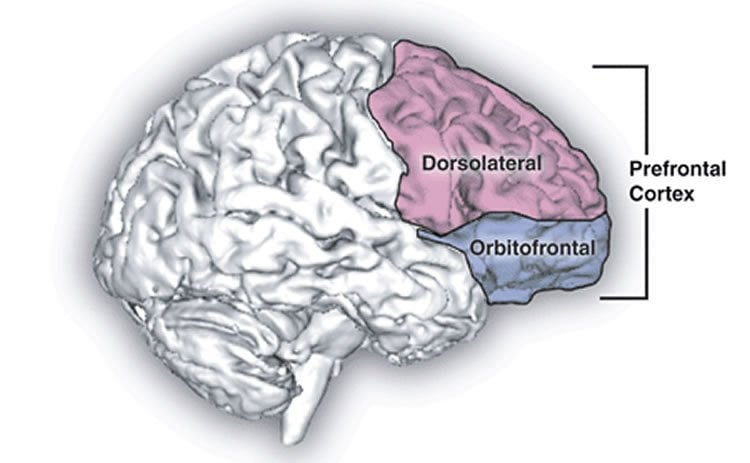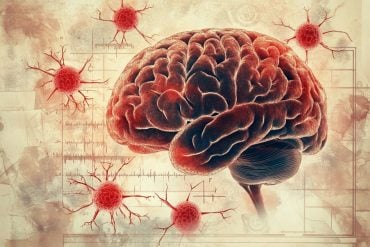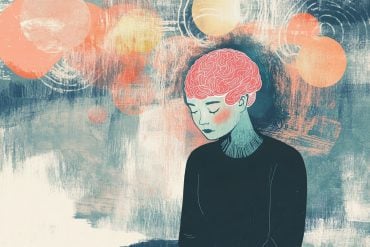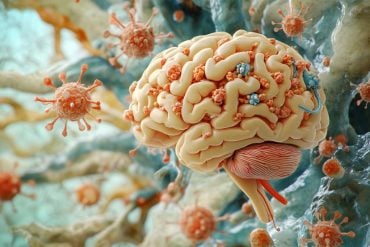Summary: A new neuroimaging study reveals the dorsolateral prefrontal cortex plays a vital role in suppressing the act of revenge.
Source: University of Geneva.
The desire for revenge can be the consequence of a feeling of anger. But is this the case at the cerebral level? What happens in the human brain when injustice is felt? To answer these questions, researchers from the University of Geneva (UNIGE), Switzerland, have developed an economic game in which a participant is confronted with the fair behaviour of one player and the unfair provocations of another player. They then observed, through brain imaging, which areas were activated as the study participant experienced unfairness and anger. In a second phase, scientists gave the participant the opportunity to take revenge. They thus identified the location in the brain of activations that are related to the suppression of the act of revenge in the prefrontal dorsolateral cortex (DLPFC). The more active the DLPFC is during the provocation phase, the less the participant takes revenge! These results can be read in Scientific Reports.
Until now, research on anger and the vengeful behaviour that results from it has been based primarily on the recall of a feeling of anger by the participants, or on the interpretation of anger on photographed faces. Olga Klimecki-Lenz, a researcher at UNIGE’s Swiss Center for Affective Science (CISA), wanted to locate live which areas of the brain reacted when the person became angry and how this feeling materialized into vengeful behaviour.
Getting angry playing the Inequality Game
25 people took part in the Inequality Game, an economic game created by Olga Klimecki-Lenz to trigger a feeling of injustice, then anger, before offering the “victim” the possibility of revenge. “The participant has economic interactions with two players, whose behaviour is actually pre-programmed – which he doesn’t know about, explains Olga Klimecki-Lenz. One is friendly, offers the participant only mutually beneficial financial interactions and sends nice messages, while the other player makes sure to multiply only his own profits, going against the participant’s interest and sending annoying messages.”
The game takes place in three phases, during which the participant is installed in a magnetic resonance imaging (MRI) scanner allowing scientists to measure his brain activity. The participant is then confronted with the photographs of the other two players and the messages and financial transactions that he receives and issues. In the first phase, the participant is in control and chooses which profits he distributes to whom. “We noticed that on average, participants here are fair towards both other players,” says Olga Klimecki-Lenz. The second phase is that of provocation: the participant passively receives the decisions of the other two players, and especially the provocations and injustice of the unfair player, which induce a feeling of anger rated on a scale from 0 to 10 by the participant himself. In the last phase, the participant is again the master of the game and can choose to take revenge or not by penalizing the other two players. Overall, participants remained nice to the fair player, but took revenge for the injustices committed by the unfair player.
The amygdala again!
The provocation phase played a crucial role in localizing the feeling of anger in the brain. “It was during this phase that we were able to identify which areas were related to feelings of anger,” adds Olga Klimecki-Lenz. Thanks to MRI, researchers observed activity of the superior temporal lobe, but also of the amygdala, known mainly for its role in the feeling of fear and in processing the relevance of emotions, when participants looked at the photograph of the unfair player. These two areas correlated with feelings of anger: the higher the level of anger reported by the participant, the stronger their activity.

Localized and defused revenge
“But the Inequality game allowed us above all to identify the crucial role of the prefrontal dorsolateral cortex (DLPFC), a zone which is key for the regulation of emotions and which is located at the front of the brain!” Olga Klimecki-Lenz explains enthusiastically. On average, participants took revenge on the unfair player. However, the researchers observed a variability in behaviour that shows that 11 participants nevertheless remained fair to the unfair player. But why so? The CISA team observed that the greater the DLPFC activity during the provocation phase, the less participants punished the unfair player. On the contrary, low DLPFC activity was associated with a more pronounced revenge on the participant following provocation by the unfair player. “We observed that DLPFC is coordinated with the motor cortex that directs the hand that makes the choice of vengeful behavior or not,” continues the CISA researcher. “There is therefore a direct correlation between brain activity in DLPFC, known for emotional regulation, and behavioural choices.”
Suppress revenge by stimulating DLPFC?
For the first time, the role of DLPFC in revenge has been identified and is distinct from concentrated areas of anger in the amygdala and superior temporal lobe. “One can then wonder if an increase in the activity of DLPFC obtained through transmagnetic stimulation, would allow to decrease the acts of vengeance or even to suppress them”, says Olga Klimecki-Lenz.
Source: Olga Klimecki-Lenz – University of Geneva
Publisher: Organized by NeuroscienceNews.com.
Image Source: NeuroscienceNews.com image is in the public domain.
Original Research: Open access research for “Distinct Brain Areas involved in Anger versus Punishment during Social Interactions” by Olga M. Klimecki, David Sander & Patrik Vuilleumier in Scientific Reports. Published July 12 2018.
doi:10.1038/s41598-018-28863-3
[cbtabs][cbtab title=”MLA”]University of Geneva”How the Brain Suppresses the Act of Revenge.” NeuroscienceNews. NeuroscienceNews, 21 August 2018.
<https://neurosciencenews.com/revenge-neuroscience-9717/>.[/cbtab][cbtab title=”APA”]University of Geneva(2018, August 21). How the Brain Suppresses the Act of Revenge. NeuroscienceNews. Retrieved August 21, 2018 from https://neurosciencenews.com/revenge-neuroscience-9717/[/cbtab][cbtab title=”Chicago”]University of Geneva”How the Brain Suppresses the Act of Revenge.” https://neurosciencenews.com/revenge-neuroscience-9717/ (accessed August 21, 2018).[/cbtab][/cbtabs]
Abstract
Distinct Brain Areas involved in Anger versus Punishment during Social Interactions
Although anger and aggression can have wide-ranging consequences for social interactions, there is sparse knowledge as to which brain activations underlie the feelings of anger and the regulation of related punishment behaviors. To address these issues, we studied brain activity while participants played an economic interaction paradigm called Inequality Game (IG). The current study confirms that the IG elicits anger through the competitive behavior of an unfair (versus fair) other and promotes punishment behavior. Critically, when participants see the face of the unfair other, self-reported anger is parametrically related to activations in temporal areas and amygdala – regions typically associated with mentalizing and emotion processing, respectively. During anger provocation, activations in the dorsolateral prefrontal cortex, an area important for regulating emotions, predicted the inhibition of later punishment behavior. When participants subsequently engaged in behavioral decisions for the unfair versus fair other, increased activations were observed in regions involved in behavioral adjustment and social cognition, comprising posterior cingulate cortex, temporal cortex, and precuneus. These data point to a distinction of brain activations related to angry feelings and the control of subsequent behavioral choices. Furthermore, they show a contribution of prefrontal control mechanisms during anger provocation to the inhibition of later punishment.






